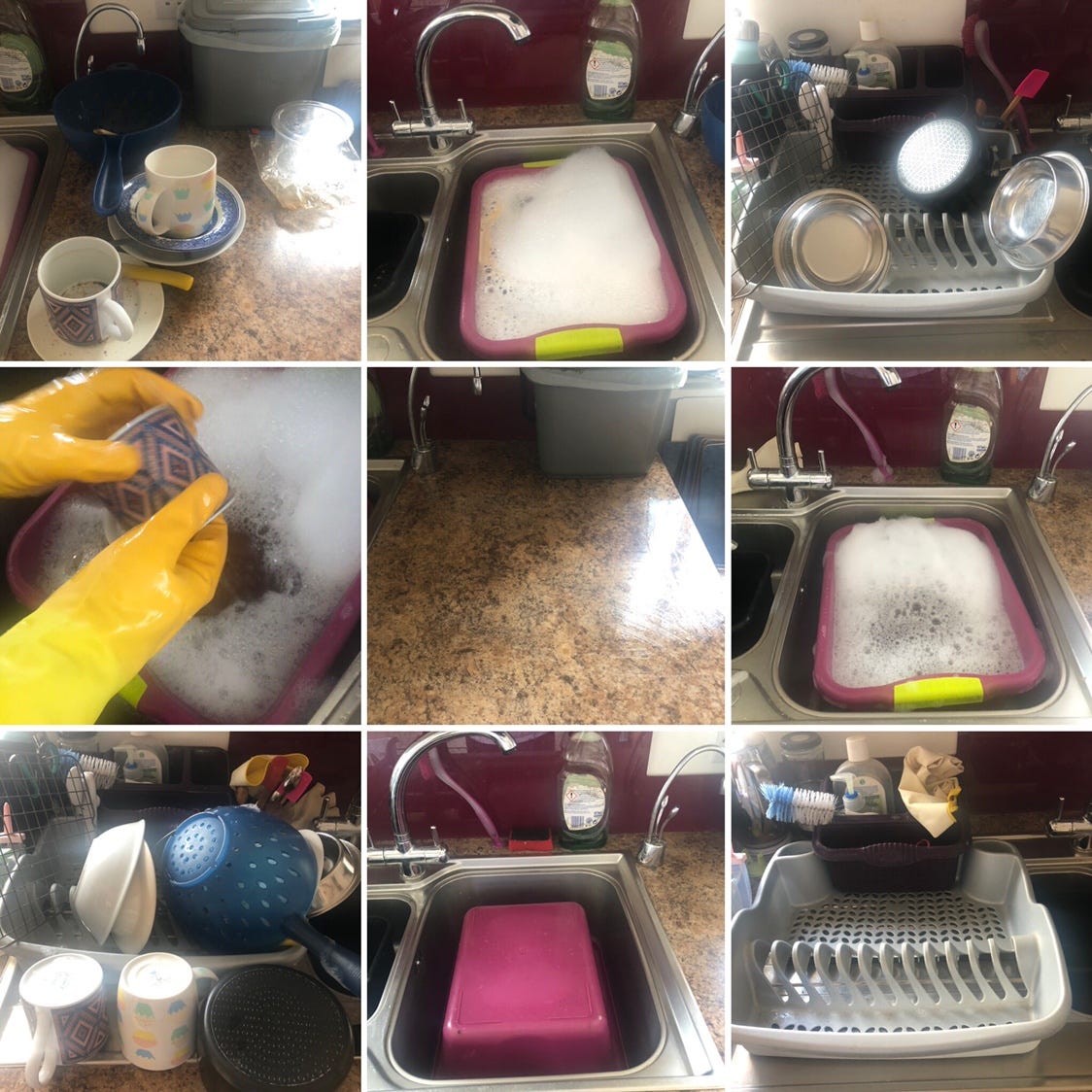
Emotional design is an issue in User Experience (UX) but is mostly framed by extremes. Design in terms of joy and delight or anger and disappointment. It’s hard to talk about design when it’s at these boundaries.
Lately in sensory/emotional workshops I have been taking a different approach to emotional design. A lot of this is due to reading “How Emotions Are Made” by Lisa Feldman Barrett which is an excellent book on neuroscience of sensemaking and emotions.
I have changed my approach by facilitating discussions around mundane tasks that we all do. Using our day-to-day tasks to talk about how emotion costs all our sensory actions and how feelings are part of sensemaking.
This post is just about a few ideas that come out of this approach.
This post is about doing the dishes.
I’ll take it in three parts:
- Anticipation
- Action
- Completion
Let’s start.
Anticipation
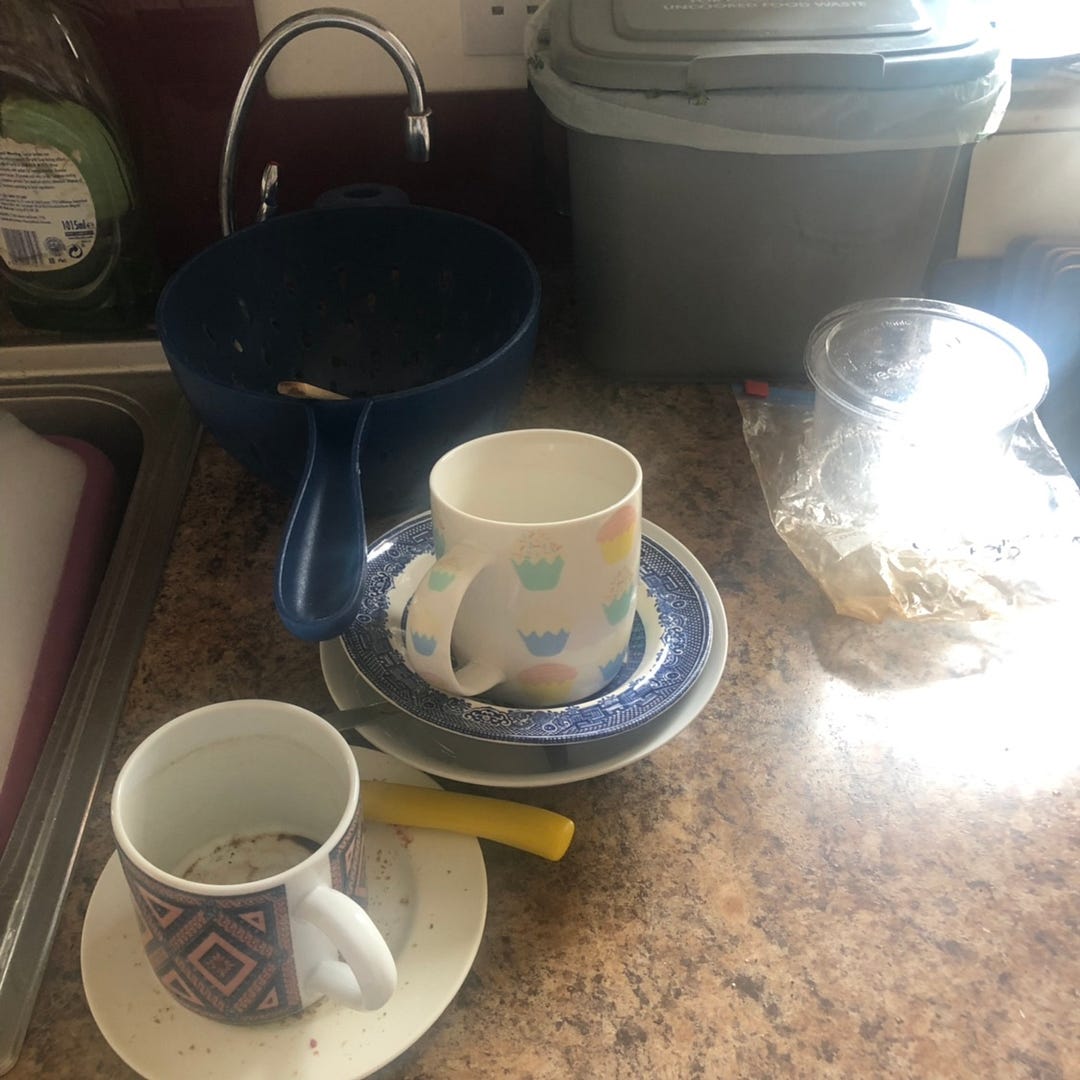

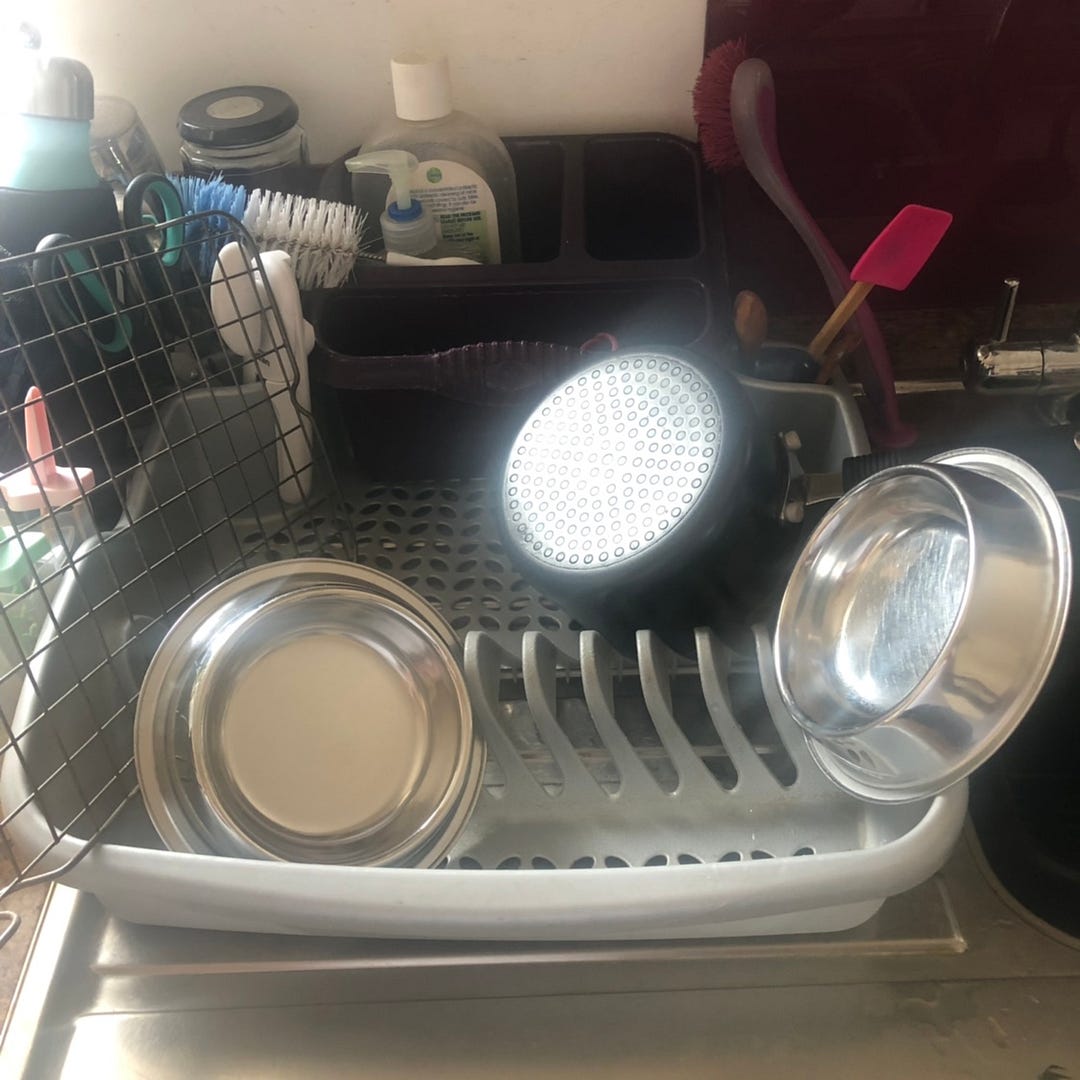
A pile of dirty dishes, some soapy water and a dish dryer.
3 parts. A beginning, a middle and an end. There’s a simple narrative in most things we do. Before, during and after. Intents, actions and ends.
Emotions are in every stage of the narrative because emotions are part of everything we do. Emotions are not reactions to events but enablers of action.
So we start at the beginning.
But where is the beginning?
Humans live in anticipation of actions. We have imaginations that sift predictions and simulate actions. We create multiple storylines before we act.
Any emotional map before we do the washing up will be a mixture of many emotions. However, like finding meaning in metaphors, we siphon down to a specific one that is memorable. Not because it is necessarily right but because it’s the one that helps us create the narrative for doing thing we must do.
I must do the washing up because I feel…unhappy about the mess.
Emotion clarifies and enables action.
Action
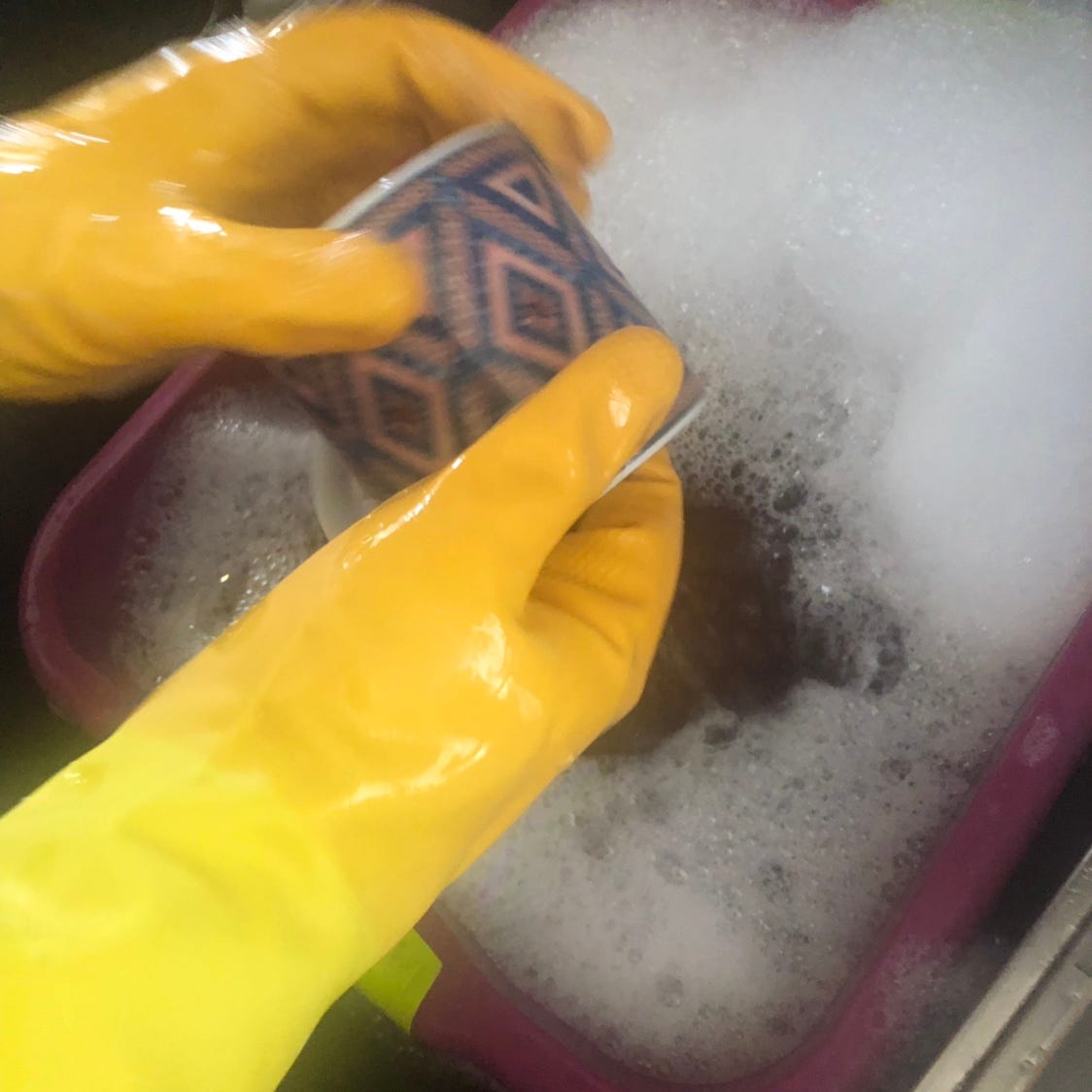
A lot of experience design concentrates around the actions of people. The design of tools and places in particular.
However, in the midst of all this design, what do you feel?
I’m not delighted by the washing bowl design or the bubbles. They need to exist to enable the washing up but anyone who asks me whether I really care about or am delighted by lemon or pine smelling washing up liquid is asking a very weird question. That is asking about emotion when centred on the product or service not the user.
How people sense affects this a lot. If I were strongly or differently affected by smell, vision, sound and so forth then my emotions would be different. The big stinking bowl of cold washing up in the morning is a very different thing to do a few middle of the day dishes.
Sensory contexts combine with emotions in actions.
To be honest, I don’t really feel much emotion when washing up by myself. The act itself is not strongly emotional.
I was happy when the Bee Gees came on the radio but that’s part of the social context that surrounds us all. My emotional sense of doing the dishes would also be different if anyone was in the kitchen with me.
Mapping emotions in actions needs to watch out for the bias to belief that product or service must have emotional impact and the changes that social contexts can create.
Emotion coats our experiences and actions but they can be subtle.
Sometime emotions are enough to guide us: not necessarily to move us.
Completion
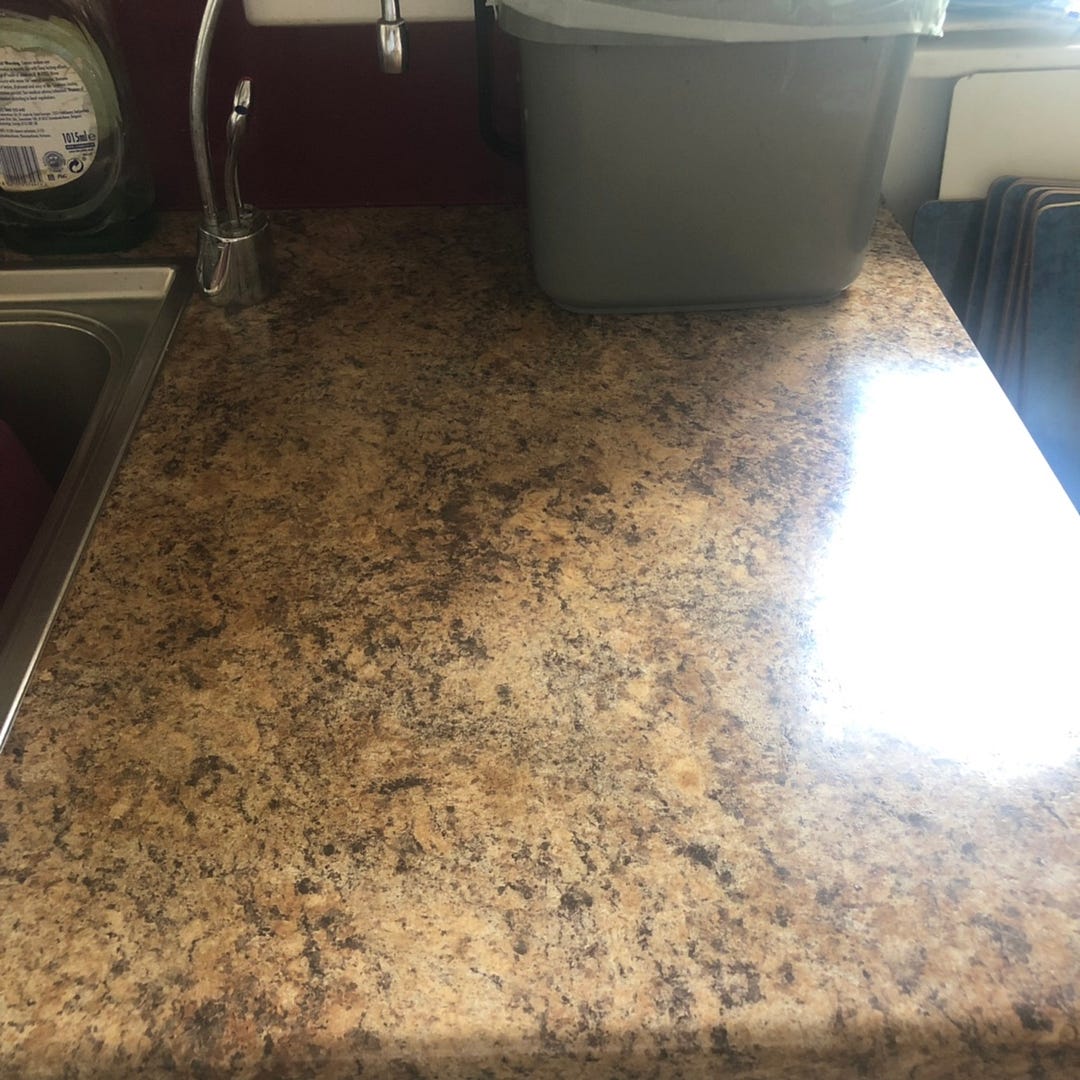
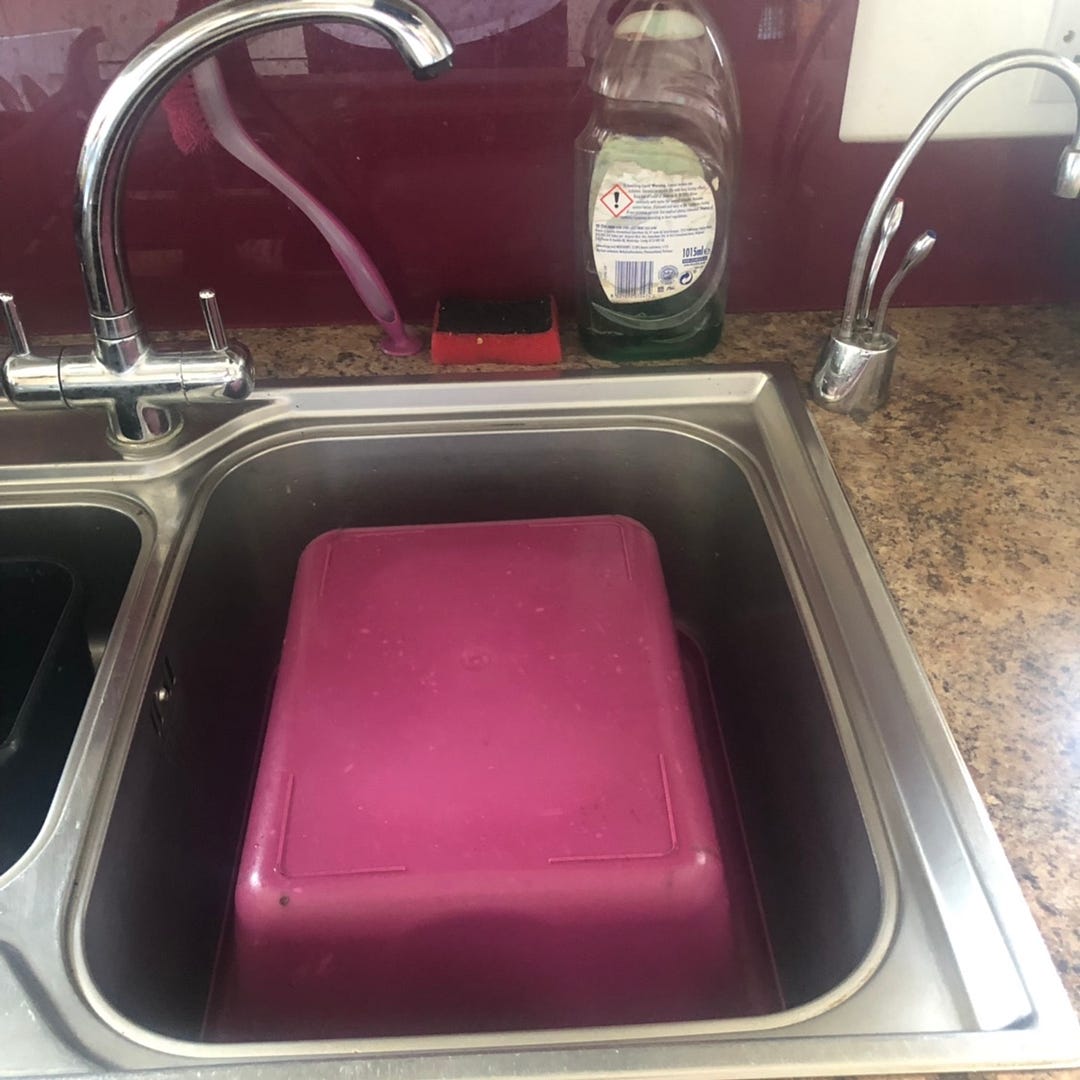

And so I finish the dishes, dry them and put them away (frankly this is a fiction: normally I just leave them on the dryer and hope someone else puts them away).
I feel satisfied to have done the dishes. I feel less unhappy.
Not happy: other things are on my mind. Doing the dishes cannot obscure that. The context of all the things I need to do today extend around me. So many other things to anticipate, act and complete.
Yet there is subtle emotional narrative to washing up the dishes. There are emotions in all this.
We all feel our way thru life. Emotions are there to help us do that.
Emotional mapping
I’ve written about this because I need to think about how to help people consider these issues of emotional design and help them find tools and methods to help map and record such things.
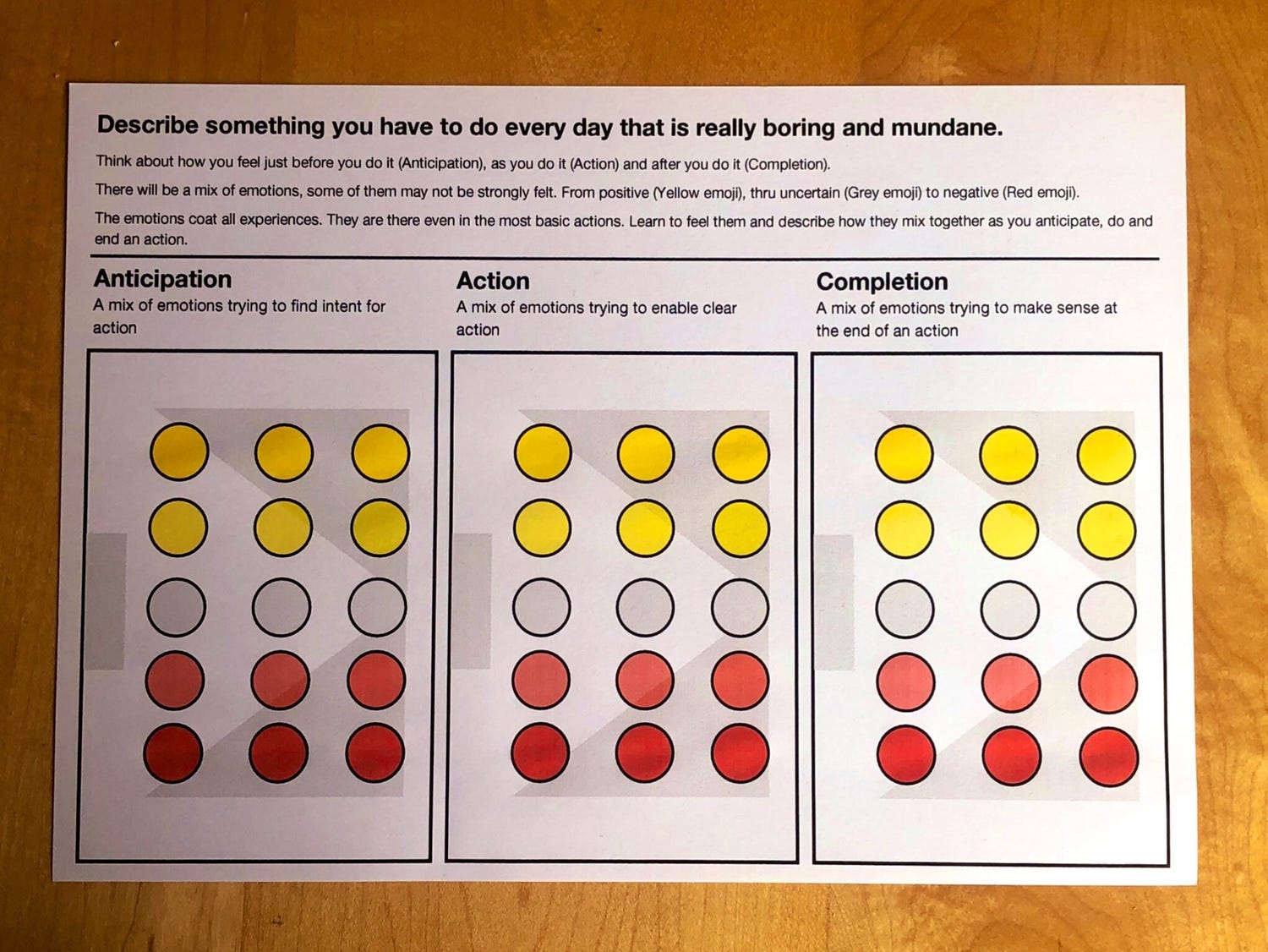
This is a workshop tool I’m working with at the moment.
It uses emojis to map emotions as we pass thru anticipation, action and completion. There is always going to be a breadth of emotions we feel at any moment but there is a momentum to describe only one emotion in any stage. The tool doesn’t show that very well at the moment.
To finish this post: practice spotting emotions in mundane activities. Emotional design needs to be founded on this day-to-day sense of feelings. Not delight, not anger but the simple emotions of being alive and active.
If you’re interested in this kind of emotional design, do let me know. I’ll be runningworks hops in UK this year.